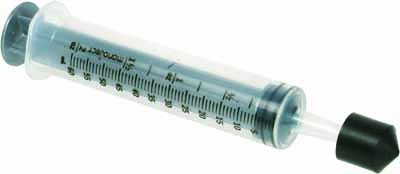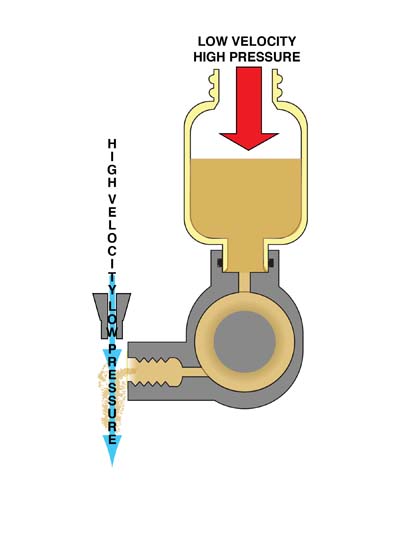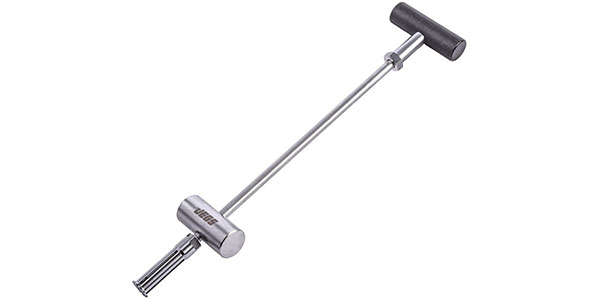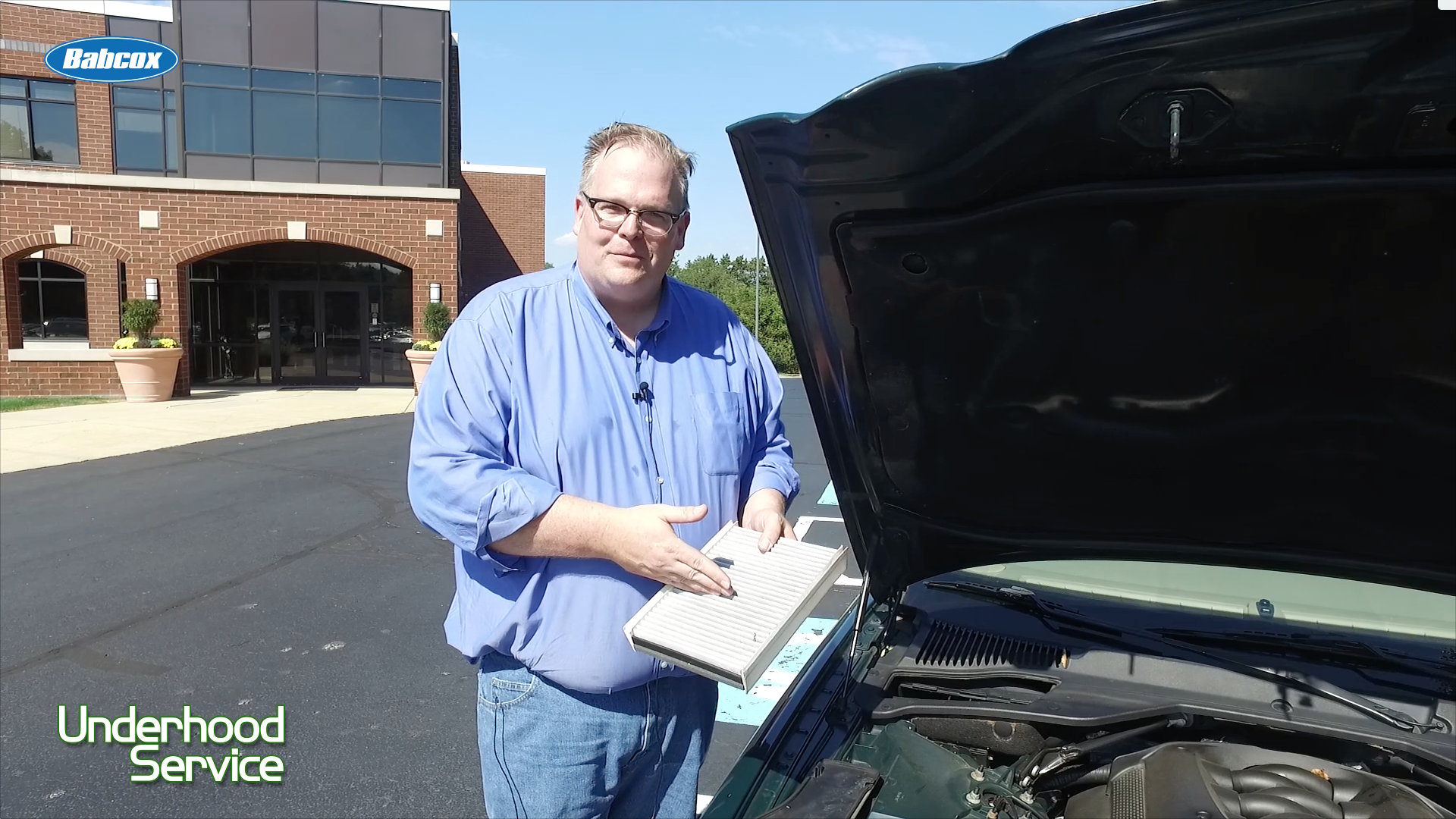There are many types of tools used to prime a master cylinder — ranging from a pressure bleeder to a syringe to  inject fluid into the port of the master cylinder.
inject fluid into the port of the master cylinder.
Here is another one to add to your tool box. You can use a blowgun to prime the bores of the cylinder. Place the tip of the blowgun at 90º to the port of the cylinder and blow. The master cylinder should be clamped with the bores in a horizontal and level position and the reservoirs filled to one half full. It is best to start with the port next to the mounting flange. The low pressure created in the port will draw the fluid from the reservoir into the cylinder bore.
You will know when the bore is primed when you see vapor coming from the port. This is all thanks to Bernoulli’s Principal. It makes airplanes fly and carburetors deliver fuel. The velocity of the air passing the port is high and the pressure in the port and cylinder bore is low. The high pressure in the reservoir forces the fluid into the cylinder bore and out the port. This is the same principal that makes a carburetor work. The high pressure in the float bowl forces the fuel out of the low pressure created in the venturi.













